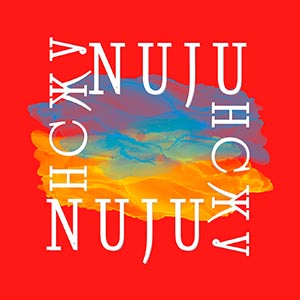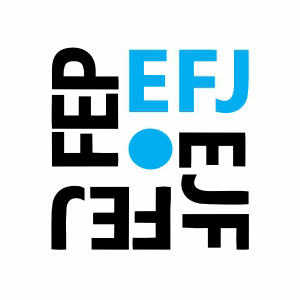The newspaper Mayak, published in Bohodukhiv, Kharkiv region, is one of those that cares not only about awareness but also about the reader’s healthy view of the world around them. It prefers not to fry up facts and events, which are so abundant in our wartime, but to tell stories about good people who live and work nearby: volunteers who help the Defense Forces of Ukraine and their fellow citizens, IDPs who have managed to successfully settle in a new place, and even boys and girls who are young patriots.
“I want people to be inspired by these positive examples and inspire others,” says editor-in-chief Tetiana Luchynska.
The end of February is traditionally a holiday for Mayak’s staff, the newspaper’s birthday. It was supposed to be a celebration last year as well – the issue of February 25, 2022 was supposed to be dedicated to the 92nd anniversary of the publication. Unfortunately, this did not happen. In fact, the issue had to be postponed until better times, as Kharkiv and its printing houses were subjected to barbaric Russian shelling from the first days of the war.
There was no printing house, so Tetiana Luchynska did without it. Together with her sister, they set up to print the newspaper, which turned into a frontline combat leaflet, on an A4 color printer. It was expensive, but in the face of a lack of information and Internet interruptions, it was necessary! The improvised newspaper contained official information, useful tips, contacts, and more.
 Tetiana printed 200-300 copies of each issue of the frontline Mayak, and by Easter, 400 copies were published. Of course, the editorial office could not reach its entire audience with such a large number, so Tetiana Luchynska focused on making sure that many readers read each copy. She distributed the printed copies to libraries, village councils, and retail outlets.
In this way, Mayak managed not only to fulfill an important socially useful information function, but also to maintain contact with its readership.
In May, Ukrposhta was preparing to resume delivering newspapers to subscribers, so it was possible to resume printing a full-fledged Mayak. In the first issue, Tetiana included the most interesting publications that were printed in the frontline version and materials prepared for the holiday issue back in February. Since Kharkiv was mercilessly shelled and the printing house was not working there, they had to look for another company that could print the issue. We found such a company in Vinnytsia. They printed it, and then waited a few more days for the finished edition to be delivered to Bohodukhiv.
Tetiana printed 200-300 copies of each issue of the frontline Mayak, and by Easter, 400 copies were published. Of course, the editorial office could not reach its entire audience with such a large number, so Tetiana Luchynska focused on making sure that many readers read each copy. She distributed the printed copies to libraries, village councils, and retail outlets.
In this way, Mayak managed not only to fulfill an important socially useful information function, but also to maintain contact with its readership.
In May, Ukrposhta was preparing to resume delivering newspapers to subscribers, so it was possible to resume printing a full-fledged Mayak. In the first issue, Tetiana included the most interesting publications that were printed in the frontline version and materials prepared for the holiday issue back in February. Since Kharkiv was mercilessly shelled and the printing house was not working there, they had to look for another company that could print the issue. We found such a company in Vinnytsia. They printed it, and then waited a few more days for the finished edition to be delivered to Bohodukhiv.
 There were some problems with the first issue and with delivering it to readers: Ukrposhta was not yet ready for this. So we had to call on volunteers to help. Knowing that Tetiana Luchynska herself was an active volunteer, they readily agreed to help. In addition, villagers agreed to pick up copies for local residents on their way home from the district center.
“People were very happy to receive a familiar full-size newspaper. It was inspiring and reassuring, giving people hope. Numerous feedbacks from readers inspired me as well,” Tatiana recalls.
Currently, the publication has a circulation of 2200-2300 copies, which are delivered to readers by Ukrposhta.
“Thank God, we are holding on. The NUJU and the Institute for Regional Media and Information (IRMI) help us. This year, our publication might not have survived, but fortunately, for the first time in the 20 years I have been working in the editorial office, we received a very powerful grant from IRMI and the Swiss non-profit organization Fondation Hirondelle on the recommendation of the NUJU. This grant has helped us survive and develop,” says the editor. “By the end of the year, we will have no problems with printing and will finally make repairs in the newsroom that we have not been able to do for years. I and our small team of three people are very grateful for this support. Among other things, thanks to this help, we are able to publish one 8-page color issue every month, in addition to the weekly 4-page issue! Readers say they are looking forward to this gift.
There were some problems with the first issue and with delivering it to readers: Ukrposhta was not yet ready for this. So we had to call on volunteers to help. Knowing that Tetiana Luchynska herself was an active volunteer, they readily agreed to help. In addition, villagers agreed to pick up copies for local residents on their way home from the district center.
“People were very happy to receive a familiar full-size newspaper. It was inspiring and reassuring, giving people hope. Numerous feedbacks from readers inspired me as well,” Tatiana recalls.
Currently, the publication has a circulation of 2200-2300 copies, which are delivered to readers by Ukrposhta.
“Thank God, we are holding on. The NUJU and the Institute for Regional Media and Information (IRMI) help us. This year, our publication might not have survived, but fortunately, for the first time in the 20 years I have been working in the editorial office, we received a very powerful grant from IRMI and the Swiss non-profit organization Fondation Hirondelle on the recommendation of the NUJU. This grant has helped us survive and develop,” says the editor. “By the end of the year, we will have no problems with printing and will finally make repairs in the newsroom that we have not been able to do for years. I and our small team of three people are very grateful for this support. Among other things, thanks to this help, we are able to publish one 8-page color issue every month, in addition to the weekly 4-page issue! Readers say they are looking forward to this gift.
 Today, Mayak is a reputable Bohodukhiv publication that not only informs readers but also organizes volunteer work, supports the Armed Forces of Ukraine and fellow countrymen in need. Mayak disseminates information about the possibility of getting such and such help or the need for such and such support not only in the printed edition, but also on Facebook, where the publication’s page has 12,000 followers, and on TikTok.
“We try to actively use social media to advertise our newspaper, to tell people what information will appear in the next issue,” says Tetiana Luchynska. “However, sometimes the effect of such advertising is controversial: some people find the information contained in such announcements enough, and they no longer need to buy the newspaper. And sometimes, on the contrary, people are interested in the announcements.”
Tetiana Luchynska says she has several cherished dreams. The first and main one is that Ukraine should win the war. The second is more practical, editorial: As the head of the media, Tetiana would like to see the entire editorial team get together again and publish Mayak on its usual 12 pages, as it did before the war.
Today, Mayak is a reputable Bohodukhiv publication that not only informs readers but also organizes volunteer work, supports the Armed Forces of Ukraine and fellow countrymen in need. Mayak disseminates information about the possibility of getting such and such help or the need for such and such support not only in the printed edition, but also on Facebook, where the publication’s page has 12,000 followers, and on TikTok.
“We try to actively use social media to advertise our newspaper, to tell people what information will appear in the next issue,” says Tetiana Luchynska. “However, sometimes the effect of such advertising is controversial: some people find the information contained in such announcements enough, and they no longer need to buy the newspaper. And sometimes, on the contrary, people are interested in the announcements.”
Tetiana Luchynska says she has several cherished dreams. The first and main one is that Ukraine should win the war. The second is more practical, editorial: As the head of the media, Tetiana would like to see the entire editorial team get together again and publish Mayak on its usual 12 pages, as it did before the war.
 ********************************************************************
This story about the media was created by the NUJU in the frame of the project «Improving Ukrainian Media Resilience in Ukraine», financed by Swiss Solidarity and implemented with the support of the Swiss non-profit organization Fondation Hirondelle and the Institute for Regional Media and Information (IRMI, Ukraine). Fondation Hirondelle and IRMI implement a project of institutional support for Ukrainian media editorial offices in the east, north and south of our country, with an emphasis on the local press. They also launched a 10-month support program for 18 media.
********************************************************************
This story about the media was created by the NUJU in the frame of the project «Improving Ukrainian Media Resilience in Ukraine», financed by Swiss Solidarity and implemented with the support of the Swiss non-profit organization Fondation Hirondelle and the Institute for Regional Media and Information (IRMI, Ukraine). Fondation Hirondelle and IRMI implement a project of institutional support for Ukrainian media editorial offices in the east, north and south of our country, with an emphasis on the local press. They also launched a 10-month support program for 18 media.
 Tetiana printed 200-300 copies of each issue of the frontline Mayak, and by Easter, 400 copies were published. Of course, the editorial office could not reach its entire audience with such a large number, so Tetiana Luchynska focused on making sure that many readers read each copy. She distributed the printed copies to libraries, village councils, and retail outlets.
In this way, Mayak managed not only to fulfill an important socially useful information function, but also to maintain contact with its readership.
In May, Ukrposhta was preparing to resume delivering newspapers to subscribers, so it was possible to resume printing a full-fledged Mayak. In the first issue, Tetiana included the most interesting publications that were printed in the frontline version and materials prepared for the holiday issue back in February. Since Kharkiv was mercilessly shelled and the printing house was not working there, they had to look for another company that could print the issue. We found such a company in Vinnytsia. They printed it, and then waited a few more days for the finished edition to be delivered to Bohodukhiv.
Tetiana printed 200-300 copies of each issue of the frontline Mayak, and by Easter, 400 copies were published. Of course, the editorial office could not reach its entire audience with such a large number, so Tetiana Luchynska focused on making sure that many readers read each copy. She distributed the printed copies to libraries, village councils, and retail outlets.
In this way, Mayak managed not only to fulfill an important socially useful information function, but also to maintain contact with its readership.
In May, Ukrposhta was preparing to resume delivering newspapers to subscribers, so it was possible to resume printing a full-fledged Mayak. In the first issue, Tetiana included the most interesting publications that were printed in the frontline version and materials prepared for the holiday issue back in February. Since Kharkiv was mercilessly shelled and the printing house was not working there, they had to look for another company that could print the issue. We found such a company in Vinnytsia. They printed it, and then waited a few more days for the finished edition to be delivered to Bohodukhiv.
 There were some problems with the first issue and with delivering it to readers: Ukrposhta was not yet ready for this. So we had to call on volunteers to help. Knowing that Tetiana Luchynska herself was an active volunteer, they readily agreed to help. In addition, villagers agreed to pick up copies for local residents on their way home from the district center.
“People were very happy to receive a familiar full-size newspaper. It was inspiring and reassuring, giving people hope. Numerous feedbacks from readers inspired me as well,” Tatiana recalls.
Currently, the publication has a circulation of 2200-2300 copies, which are delivered to readers by Ukrposhta.
“Thank God, we are holding on. The NUJU and the Institute for Regional Media and Information (IRMI) help us. This year, our publication might not have survived, but fortunately, for the first time in the 20 years I have been working in the editorial office, we received a very powerful grant from IRMI and the Swiss non-profit organization Fondation Hirondelle on the recommendation of the NUJU. This grant has helped us survive and develop,” says the editor. “By the end of the year, we will have no problems with printing and will finally make repairs in the newsroom that we have not been able to do for years. I and our small team of three people are very grateful for this support. Among other things, thanks to this help, we are able to publish one 8-page color issue every month, in addition to the weekly 4-page issue! Readers say they are looking forward to this gift.
There were some problems with the first issue and with delivering it to readers: Ukrposhta was not yet ready for this. So we had to call on volunteers to help. Knowing that Tetiana Luchynska herself was an active volunteer, they readily agreed to help. In addition, villagers agreed to pick up copies for local residents on their way home from the district center.
“People were very happy to receive a familiar full-size newspaper. It was inspiring and reassuring, giving people hope. Numerous feedbacks from readers inspired me as well,” Tatiana recalls.
Currently, the publication has a circulation of 2200-2300 copies, which are delivered to readers by Ukrposhta.
“Thank God, we are holding on. The NUJU and the Institute for Regional Media and Information (IRMI) help us. This year, our publication might not have survived, but fortunately, for the first time in the 20 years I have been working in the editorial office, we received a very powerful grant from IRMI and the Swiss non-profit organization Fondation Hirondelle on the recommendation of the NUJU. This grant has helped us survive and develop,” says the editor. “By the end of the year, we will have no problems with printing and will finally make repairs in the newsroom that we have not been able to do for years. I and our small team of three people are very grateful for this support. Among other things, thanks to this help, we are able to publish one 8-page color issue every month, in addition to the weekly 4-page issue! Readers say they are looking forward to this gift.
 Today, Mayak is a reputable Bohodukhiv publication that not only informs readers but also organizes volunteer work, supports the Armed Forces of Ukraine and fellow countrymen in need. Mayak disseminates information about the possibility of getting such and such help or the need for such and such support not only in the printed edition, but also on Facebook, where the publication’s page has 12,000 followers, and on TikTok.
“We try to actively use social media to advertise our newspaper, to tell people what information will appear in the next issue,” says Tetiana Luchynska. “However, sometimes the effect of such advertising is controversial: some people find the information contained in such announcements enough, and they no longer need to buy the newspaper. And sometimes, on the contrary, people are interested in the announcements.”
Tetiana Luchynska says she has several cherished dreams. The first and main one is that Ukraine should win the war. The second is more practical, editorial: As the head of the media, Tetiana would like to see the entire editorial team get together again and publish Mayak on its usual 12 pages, as it did before the war.
Today, Mayak is a reputable Bohodukhiv publication that not only informs readers but also organizes volunteer work, supports the Armed Forces of Ukraine and fellow countrymen in need. Mayak disseminates information about the possibility of getting such and such help or the need for such and such support not only in the printed edition, but also on Facebook, where the publication’s page has 12,000 followers, and on TikTok.
“We try to actively use social media to advertise our newspaper, to tell people what information will appear in the next issue,” says Tetiana Luchynska. “However, sometimes the effect of such advertising is controversial: some people find the information contained in such announcements enough, and they no longer need to buy the newspaper. And sometimes, on the contrary, people are interested in the announcements.”
Tetiana Luchynska says she has several cherished dreams. The first and main one is that Ukraine should win the war. The second is more practical, editorial: As the head of the media, Tetiana would like to see the entire editorial team get together again and publish Mayak on its usual 12 pages, as it did before the war.
 ********************************************************************
This story about the media was created by the NUJU in the frame of the project «Improving Ukrainian Media Resilience in Ukraine», financed by Swiss Solidarity and implemented with the support of the Swiss non-profit organization Fondation Hirondelle and the Institute for Regional Media and Information (IRMI, Ukraine). Fondation Hirondelle and IRMI implement a project of institutional support for Ukrainian media editorial offices in the east, north and south of our country, with an emphasis on the local press. They also launched a 10-month support program for 18 media.
********************************************************************
This story about the media was created by the NUJU in the frame of the project «Improving Ukrainian Media Resilience in Ukraine», financed by Swiss Solidarity and implemented with the support of the Swiss non-profit organization Fondation Hirondelle and the Institute for Regional Media and Information (IRMI, Ukraine). Fondation Hirondelle and IRMI implement a project of institutional support for Ukrainian media editorial offices in the east, north and south of our country, with an emphasis on the local press. They also launched a 10-month support program for 18 media.
Economic reference
Mayak weekly newspaper
Distribution area: Bohodukhiv district of Kharkiv region Editor: Tetiana Luchynska- It is published on 4 pages, and at the end of the month, an 8-page color newspaper with the Mayak’s Svitlytsia is published. Before the war, the newspaper was published weekly on 12 pages. From February 24 to mid-May, Ukrposhta did not operate in the region. During this period, the editorial office published the Frontline Newspaper (A4 format) with a circulation of 200-400 copies. It was distributed free of charge in shops, village councils, and libraries. During this period, one full-length newspaper was also published. Currently, subscriptions account for the lion’s share of distribution channels is 99%.
- The average circulation of one issue in March 2023 was 1950 copies.
- Currently, three people are working on the newspaper: an editor-director, an advertising manager, and a layout designer. Before the war, the team consisted of 7 people. When the full-scale invasion began, some became internally displaced, others found other job.
- The media outlet received technical assistance: a power bank from the NUJU, a generator from Reporters Without Borders. Also, thanks to donors of the Improving the Resilience of Ukrainian Media project, they were able to purchase a laptop and a tablet. This year, the publication received a grant from IRMI and the Swiss non-profit organization Fondation Hirondelle.
- The main sources of media funding are subscriptions (60%) and grants (25%).
- In addition to the print version, the media is represented on digital platforms such as Facebook, Instagram, Telegram, and Viber. The war has shown that when a print edition is not published for objective reasons, digital platforms are the tool for interaction between the publication and its readers. The Facebook group “MAYAK Bohodukhiv” has almost doubled in size during the war and now has more than 12 thousand members. The number of participants in the chat room on the TG channel has also increased.
- The media outlet is engaged in volunteer work and holds auctions to support the Armed Forces. The newspaper plans to create a website.
- The publication is 93 years old. And its fans have been reading it for generations, with the habit of reading the district newspaper being passed down from generation to generation.

 THE NATIONAL UNION OF
JOURNALISTS OF UKRAINE
THE NATIONAL UNION OF
JOURNALISTS OF UKRAINE
















Discussion about this post